This landmark exhibition examines the artistic exchanges among Johannes Vermeer and his contemporaries from the mid-1650s to around 1680, when they reached the height of their technical ability and mastery of genre painting, or depictions of daily life. The introduction of quiet scenes unfolding in private household spaces and featuring elegant ladies and gentlemen was among the most striking innovations of Dutch painting of the Golden Age, a time of unparalleled innovation and prosperity.
The exhibition brings together nearly 70 works by Vermeer and his fellow painters, including Gerard ter Borch, Gerrit Dou, Pieter de Hooch, Gabriel Metsu, Frans van Mieris, Caspar Netscher, and Jan Steen, who lived in various towns throughout the Dutch Republic, from Delft and Deventer to Amsterdam and Leiden. Juxtaposing paintings related by theme, motif, and composition, the exhibition explores how these artists inspired, rivaled, surpassed, and pushed each other to greater artistic achievement. The exhibition features 10 paintings by Vermeer (many of which have not been seen in the United States since the Gallery’s 1995–1996 exhibition Johannes Vermeer), including
The Lacemaker (c. 1669–1670, Musée du Louvre, Paris)

Johannes Vermeer, The Love Letter, c. 1669-70 oil on canvas Rijksmuseum, purchased with the support of Vereniging Rembrandtand The Love Letter (c. 1669–1670, Rijksmuseum, Amsterdam).
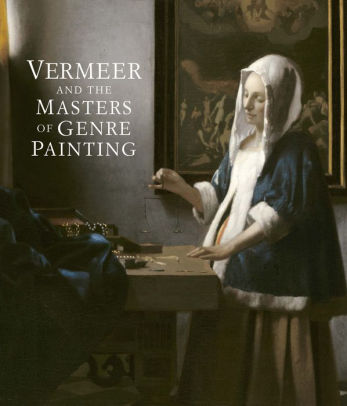
A fully illustrated catalog features essays by the curators and essays and entries by a team of international scholars.
This exhibition is curated by Arthur K. Wheelock Jr., curator of northern baroque paintings, National Gallery of Art, Washington; Dr. Adriaan Waiboer, head of collections and research, National Gallery of Ireland, Dublin; and Blaise Ducos, curator of Dutch and Flemish paintings, Musée du Louvre, Paris.
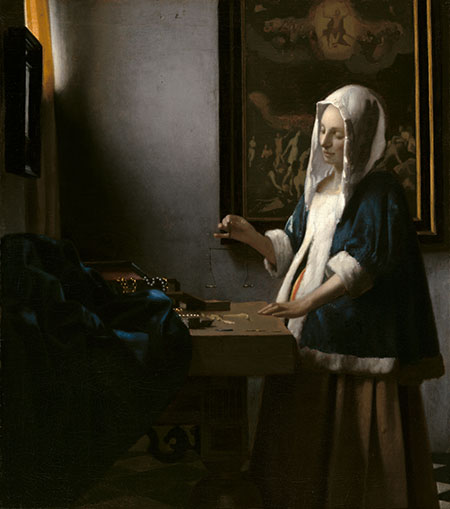
Johannes Vermeer, Woman Holding a Balance, c. 1664, oil on canvas, National Gallery of Art, Washington, Widener Collection
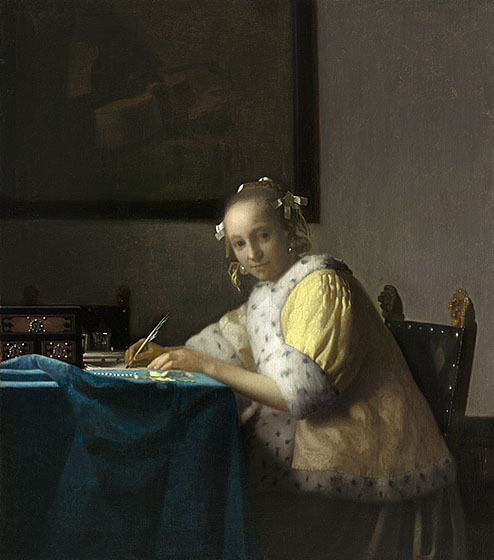
Johannes Vermeer, The Astronomer, 1668, oil on canvas, Musée du Louvre, Paris, Département des peintures, Acquired by "dation" in 1982. Photo © RMN-Grand Palais (Musée du Louvre)/Franck Raux
Gerrit Dou, Woman at the Clavichord, c. 1665, oil on panel, By Permission of the Trustees of Dulwich Picture Gallery, London
Gerard ter Borch, Lady at Her Toilet, c. 1660, oil on canvas, Detroit Institute of Arts, Founders Society Purchase, Eleanor Clay Ford Fund, General Membership Fund, Endowment Income Fund and Special Activities Fund
Gerard ter Borch, The Suitor’s Visit, c. 1658, oil on canvas, National Gallery of Art, Washington, Andrew W. Mellon Collection

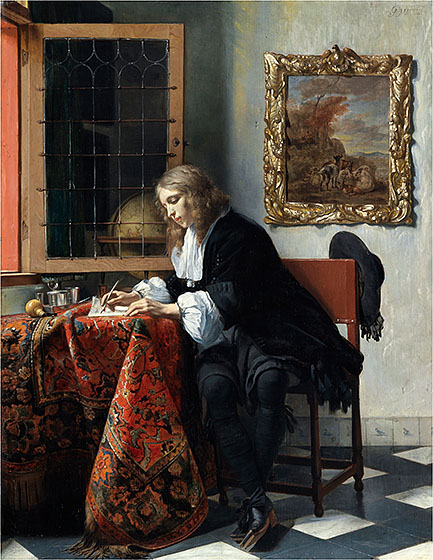

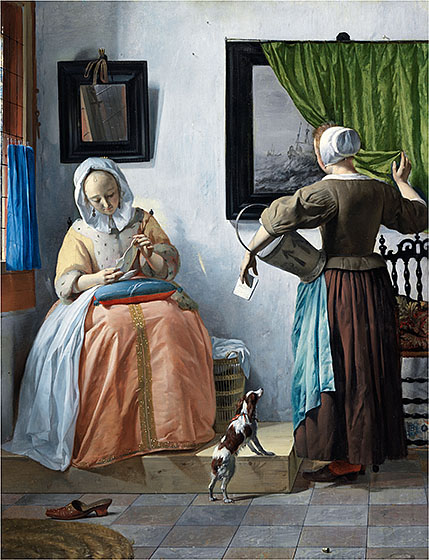



Comments
Post a Comment